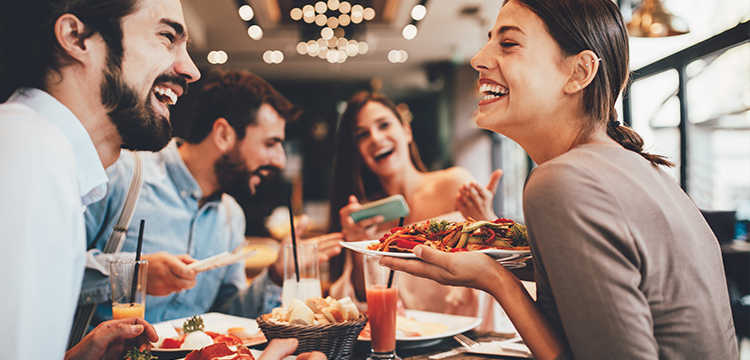This week I succumbed to the temptation of a cut-price meal at one of my favourite local restaurants. The small family unit in my social bubble tried to recall the last time we met together in the restaurant, or indeed any restaurant, and concluded that it must have been at least six months since we had done so. It was delightful to be back. Of course there were things you noticed that were different such as the fact that contact details were assiduously checked, tables cleaned with extreme regularity and the fact that the restaurant had been designed to have a much smaller number of people in it. The food was superb and it was a lovely way of reminding oneself of what normal life used to feel like.
But it isn't really normal is it? Cut-price meals funded by the government, and ultimately of course by the taxpayer, are not a feature of normal life as I remember it. The 'eat out to help out scheme' is one of the more innovative of the package of features which have been put in place to help support industries that have been badly hit by the pandemic. Figures published this week show that in the fortnight since the scheme came into force at the beginning of August 85,000 restaurants have taken part and discounted meals have been taken advantage of on 35 million different occasions. That is a lot of eating. Ultimately, it is estimated that the scheme will cost around £500 million by the end of the month when it ends and this is on top of the £2.5 billion that it will cost the exchequer to cut the rate of VAT on hospitality, accommodation and attractions down from 20% to 5% until mid-January.
Certainly the eat out to help out scheme has in statistical terms worked. Figures from OpenTable, an online reservation service, suggest that year-on-year comparisons to last August suggest increased activity of between 10% and 48% on a daily basis (though it is not clear from the reports I have read whether this just covers Monday to Wednesday when the discounts apply or all days of the week). This will I am sure will be very welcome to a sector that has been hugely affected by lockdown. However, not everyone is convinced. According to figures just released, the south coast resort of Bournemouth has benefitted more from the scheme than anywhere else in the UK in terms of increased levels of business. But one restaurateur there, who has not taken up the scheme, said that he felt that with his busines operating at 50% capacity and the town full of tourists there was no need to cut prices to incentivise customers. He suggested that January would be a much better time to run it.
And indeed the most significant question perhaps is whether or not this will be an uptick limited to August or whether it will go beyond this. The VAT reduction until January will in a cost sense help and it will be interesting to see whether restaurants pass the reduction on to customers or charge the same prices as before but keep more for themselves and pay less back in VAT. The latter could be a dangerous strategy as of course the VAT element needs to be separately shown on invoices and it will therefore be quite transparent to customers as to what is happening. Restaurant proprietors will hope that the uptick in August will not be a one-off but rather that it sees the start of a long-term trend of returning customers which will help their businesses kick off again. Time alone will tell.
Wayne Bartlett is an author for accountingcpd. To see his courses, click here.

You need to sign in or register before you can add a contribution.